25 Years of Technical Writing for LCGC – My Personal Reflections
Special Issues
In 1983, the brainchild of Ed Aster, President of Aster Publishing, and Tom Hager, an editor, a publication called LC-Liquid Chromatography and HPLC Magazine was christened.
In 1983, the brainchild of Ed Aster, President of Aster Publishing, and Tom Hager, an editor, a publication called LC-Liquid Chromatography and HPLC Magazine was christened. The concept was unique at the time, a magazine that was oriented towards the truly practical side of this relatively new technique called high performance liquid chromatography (HPLC). Most of the peer-reviewed publications of that time popular with analytical chemists and chromatographers such as Analytical Chemistry, Journal of Chromatographic Science and Journal of Chromatography emphasized original research contributions or highly theoretical articles beyond the interest of most bench chemists. American Laboratory was publishing articles on chromatography, spectroscopy, and other analytical techniques but was not devoted to the specific topic of HPLC.
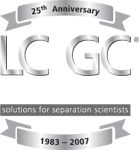
The first issue of LC Magazine was published in March, 1983 and had an array of authors but no permanent columnists. Troubleshooter Dennis Runser did write several troubleshooting articles in the first issues. His tenure was short-lived and John Dolan and Vern Berry started to write on the topic in October of that year. In 1984, John Dolan became the troubleshooting king when Vern Berry began to cover meeting reports instead.

Ronald E. Majors
My first "Column Watch" article appeared in the April, 1983 issue, making me the oldest continuous columnist in the publication. The topic — "Micro- Versus Conventional HPLC"— could just as easily be an article of today but with dramatically different definitions of these techniques. Writing review-like articles was not new to me. I had started writing on HPLC columns almost from the beginning. My first review entitled "High Performance LC Packing Materials" was published in American Laboratory in May, 1972 and I authored and edited several special issues devoted to columns in the Journal of Chromatographic Science in 1973, 1977, and a two issue set in 1980. Along with Howard Barth, then at Hercules, Wilmington, Delaware, and Charlie Lochmueller, a professor at Duke University, RTP, North Carolina, I also authored the Analytical Chemistry Biennial Reviews on HPLC for several issues in the 1980s.
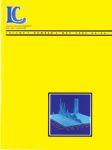
So, just before the first issue of LC Magazine, Tom Hager, the editor, gave me a telephone call (there was no e-mail in those days) and asked me if I would consider writing a monthly column on LC columns for his magazine. I jumped at the chance to write on my favorite subject so I said "yes" and the rest is history, as they say. At the beginning, I wrote mostly on HPLC columns and related topics such as troubleshooting and problem solving but started to branch out as my interests broadened. Topics such as column switching, unique applications such as oligonucleotides, proteins and peptide, and affinity separations, solid-phase extraction, supercritical fluid chromatography, and thin-layer chromatography were some of the extra topics that I covered in the early days. In May, 1983, I wrote my first Pittcon review article — only two pages in length. Contrast the first article to my Pittcon articles of today, which are now monstrous two-issue reviews with multi-page tables but eagerly looked forward to by readers because of their in-depth coverage (so I am told).
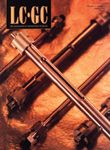
In the early days, we did more reader and expert surveys than we do now since it was a quantitative approach to see trends in column usage and in exploring future needs. Today, everybody is surveyed to death and response rates have fallen from the 20–25% response that we used to get. From these survey results, it was interesting to observe how long it took technology to go from the research lab to the mainstream use, often a lag as long as 10 years. For example, in the late 1970s and early 1980s when research articles were covering the topic of better performance and faster separations with 3-and 5-μm columns, most users were still using 10-μm columns in the lab, perhaps because a lot of the pharmaceutical methods were validated and thus users tended to stay with the original columns rather than change. It will be interesting to see if the sub-2-μm HPLC columns of today will be mainstream when I am long retired.
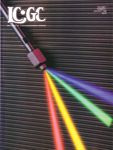
In 1984, a competitive magazine popped up, simply called Chromatography. After assembling a host of "big name" chromatographers as editors and initial authors, the magazine tried to duplicate the success of LC Magazine. Chromatography tried to mimic the LC Magazine approach and expanded it to cover gas chromatography also. The magazine also tried to woo the columnists to abandon LC Magazine and join them. We refused! Not to be outdone, in his typical manner, Ed Aster gobbled up this magazine and in April, 1986, LCGC was born. After that I started to include more GC columns' articles to balance the coverage and I still try to do so today.
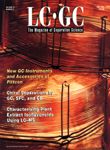
In 1990, I joined Hewlett-Packard and started working in the area of sample preparation. Since my interests were now expanding further, LCGC and I launched "Sample Preparation Perspectives" in January 1991 that addressed the biggest laboratory bottleneck at the time (and perhaps it still is!). I began to cover topics like solid-phase extraction, supercritical fluid extraction, robotics and automation, sampling, pressurized-fluid extraction, and the like.
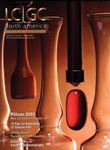
In 1993, Aster Publishing sold the magazine to Advanstar Communications, a much larger publishing company. The mid-1990s also saw the introduction of special topic issues that allowed for more in-depth coverage on a particular subject. During the ensuring years, supplements on current issues in HPLC column technology (May, 1997), review on modern solid-phase extraction (May, 1998), sample preparation of solid samples (June, 1999), sample preparation for volatile compounds (September, 1999), and recent developments in LC column technology (2003, 2004, 2006) were published.
Having worked in the chromatography supplies and instrument business over the years of writing for LCGC [Varian Associates, EM Science (now EMD), and now Hewlett-Packard/Agilent Technologies), my biggest personal challenge was to do my best to provide neutrality on techniques and products that I covered. Since most of my articles tend to cover products that can be purchased today and not on esoteric research developments that may never make it to market, I covered many columns and instruments that were introduced at various meetings and symposia, especially Pittcon. In order to have a timely publication, companies send me their new product announcements 3–4 months before the actual event. Needless to say, some young product managers would get concerned about providing this information since I was working for one of their competitors. However, I have always kept this pre-introductory information under strictest confidence. Over the years, I have established confidence from most of my industrial colleagues and can say proudly that I have never been accused of any blatant or even subtle commercialism.
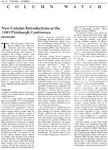
Ron Major's First Pittcon Review (Vol. 1, Number 3, 1983)
Over the years, I have had the privilege to work with nine excellent editors (one of them twice) who guided the magazine through its growth phase and its expansion into Europe and Asia. In particular, I would like to mention two of them — Kari Hallenburg and Jeffrey Schier —who served as Editors for seven and 5 1/2 years, respectively. Of course, they all had a supporting staff of associate, assistant, and technical editors who do much of the legwork to get the magazine out on time. In particular, I would like to cite the contributions of Lisa McAdam, the managing editor, who remained in Oregon when the consolidation of the editorial offices to New Jersey occurred in 2003. Lisa devoted 12 years to the magazine and was as tough and thorough of an editor as one will ever see, never allowing deadlines to slip. The technical editor, Steve Brown, who started in July, 1989, and remains to this day is another special editor that I have had the privilege to work with all of those years. The four publishers: Ed Aster (1983–1989), Brian Langille (1990–1993), Rich Vallari (1994-2000), and Mike Tessalone (2000 to present) have always supported the editorial department and have done their best to draw that line between the commercial side from the technical side of this controlled-circulation publication (meaning "free" to the reader since content is paid for by advertisers).
Finally, I would like to express my congratulations to LCGC for their 25 years of continued publication and for maintaining their high editorial standards over these years. I have found the magazine to provide outstanding support to the columnists and to the field of chromatography by participating in exhibitions, providing training and seminar opportunities and publishing a quality magazine with high information content. It has been my privilege to write for the magazine and, hopefully, I will continue to do so for some time.
Ronald E. Majors "Column Watch" Editor Ronald E. Majors is a senior chemist, Agilent Technologies, Life Sciences and Chemical Analysis, Columns and Supplies Division, Wilmington, Delaware, and is a member of LCGC's editorial advisory board. Direct correspondence about this column to "Sample Prep Perspectives," LCGC, Woodbridge Corporate Plaza, 485 Route 1 South, Building F, First Floor, Iselin, NJ 08830, e-mail lcgcedit@lcgc-mag.com

Detailed Glycosylation Analysis of Therapeutic Enzymes Utilizing Comprehensive 2D-LC–MS
January 3rd 2025In this article, the use of comprehensive two-dimensional liquid chromatography (LC×LC) coupled to mass spectrometry (MS) for characterizing glycosylation of therapeutic enzymes is presented.
Trending on LCGC: The Top Content of 2024
December 30th 2024In 2024, we launched a content series, covered major conferences, presented prestigious awards, and continued our monthly Analytically Speaking podcasts. Below, you'll find a selection of the most popular content from LCGC International over the past year.